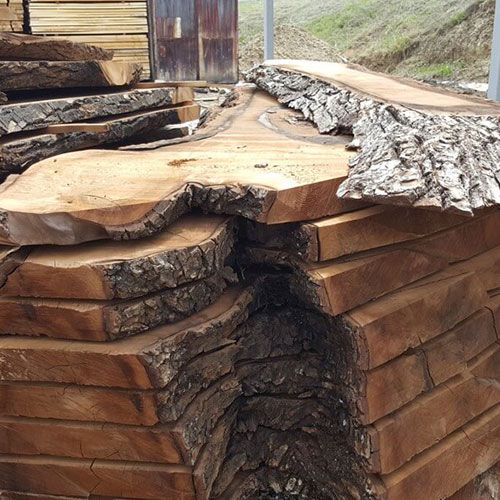


It grows in almost every part of Turkey. It does not form forests. It is grown in gardens and fields. It belongs to the group of trees with heartwood.
It is diffusely porous. The pores forming the spring texture are larger than the pores forming the autumn texture. The year rings are precisely and distinctly separated from each other. The pores appear as small holes in the cross section, and as needle tears in the core and vein section. The core rays of the walnut are too small to be seen with the naked eye. Due to the difference in the color of the spring and autumn textures, parallel lines of different colors are seen in the cross section. Rich vein patterns with vein sections are formed. There are veined, wavy and shiny types. Root veneers extracted from the parts of the walnut close to the root give the possibility of obtaining very vivid symmetrical patterns. Such coatings are especially sought after in the production of classical furniture.
The outer wood is yellow, gray. The heartwood ranges from light milky brown to dark brown. The timber of the walnut is medium hard and tight fibre. It is a heavy tree. The qualification to connect with nails, screws and glue is sufficient. It has good resistance to physical effects. He works hard and pulls a lot. It splits easily. It is durable only in dry conditions. It is processed easily and conveniently. The specific gravity of the walnut in the air-dried sarcophagus is about 0.65 gr/cm3.
Walnut Timber Usage Areas?
It is a high quality and aesthetically valuable furniture tree. Interior design is highly sought after. It is used as a solid v coating. It gives successful results in carved and lathe works. It can be used in musical instrument and model making. Sold in solid veneer, Solid wood is sometimes sized to the hardwood standard, but mostly in planks. Straight-lined veneer is called milling walnut, the normal patterned type is called veined walnut veneer, and the very mixed patterned type is called root walnut veneer.